11+ Sample Blood Sugar Charts
-
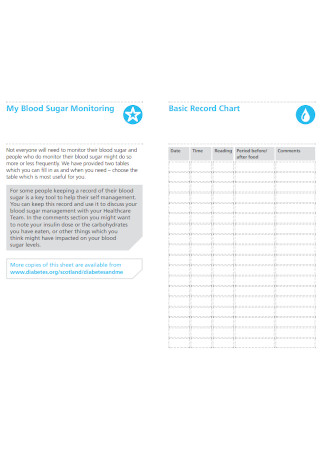
Blood Sugar Monitoring Record Chart
download now -
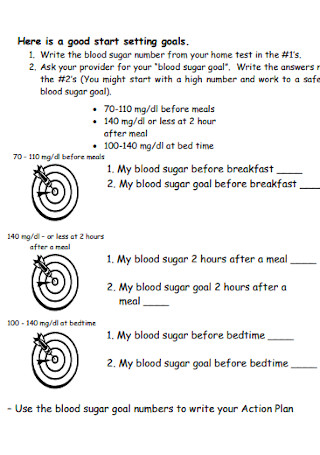
High Blood Sugar Chart
download now -
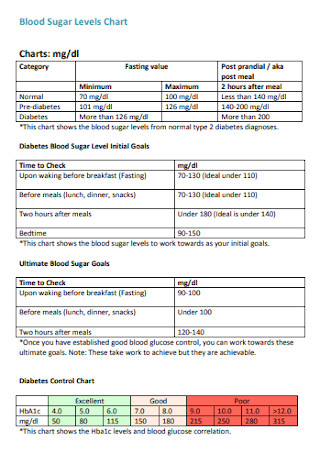
Blood Sugar Levels Chart
download now -
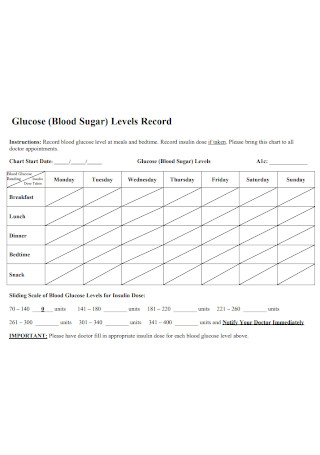
Blood Sugar Glucose Levels Record Chart
download now -
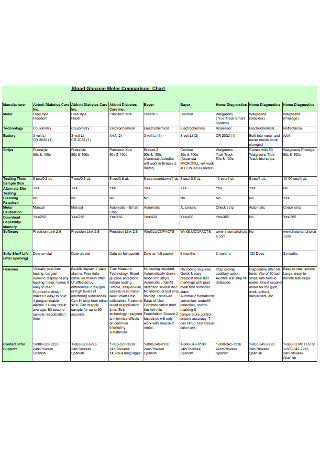
Blood Glucose Meter Comparison Chart
download now -
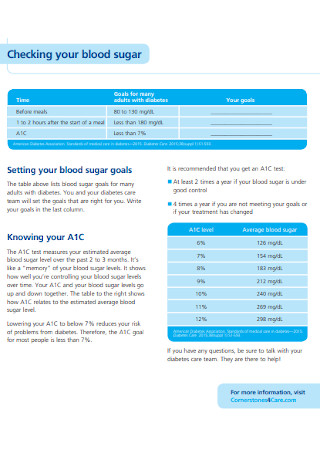
Sample Blood Sugar Chart
download now -
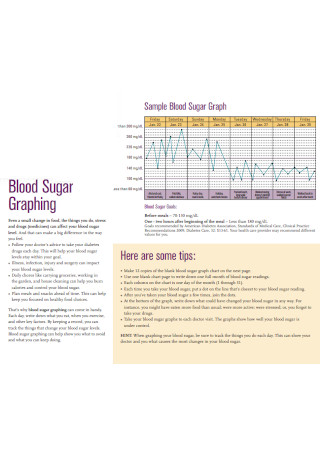
Sample Blood Sugar Graph
download now -
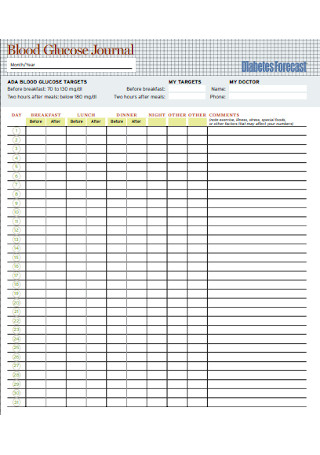
Blood Glucose Sugar Journal Chart
download now -
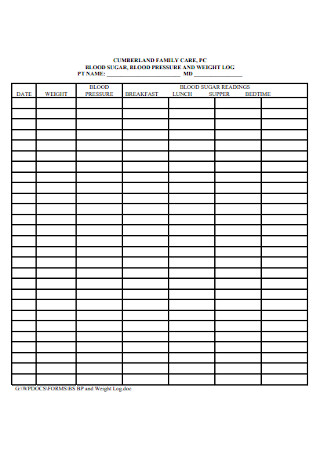
Blood Pressure Suger Chart
download now -

Fasting Blood Sugar Level Chart
download now -

Diabetes Blood Sugar Log Chart
download now -
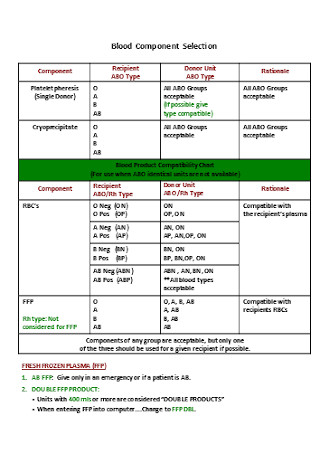
Blood Component Selection Chart
download now
FREE Blood Sugar Chart s to Download
11+ Sample Blood Sugar Charts
What is a Blood Sugar Chart?
Factors Affecting a Person’s Blood Sugar Level
Diseases Associated with Abnormal Blood Sugar Level
How to Interpret a Blood Sugar Chart?
FAQs
How does squeezing your finger affect blood sugar?
How do you feel when your blood sugar is too high?
Are home blood sugar tests accurate?
What are the food that help stabilize insulin and blood sugar level?
What are the possible treatments, medication, and preventions for diabetes?
What is a Blood Sugar Chart?
Blood sugar charts act as a reference to check, monitor, and assess a person’s blood sugar level, allowing doctors and medical experts to develop a diabetes treatment plan for their patients. It outlines the different blood sugar levels and determines the ideal blood sugar level of an individual throughout the day before and after meals. Especially for diabetic patients, the blood sugar chart helps them manage and self-monitor their glucose level and blood sugar test results by setting a target goal with their glucose intake per day.
Factors Affecting a Person’s Blood Sugar Level
Staying healthy and maintaining the average blood sugar level can be challenging at times. Everybody loves to enjoy the food they eat and the activities they do. Still, a sudden drop or increase of the blood sugar level can arrive out of nowhere, which may lead to complications for people with diabetes when not appropriately treated. Identify the factors affecting a person’s blood sugar level read the list below.
Diseases Associated with Abnormal Blood Sugar Level
The body requires glucose for energy to function correctly. Carbohydrates, in particular, serve as the most significant source of glucose for a typical diet. However, the abnormal level of glucose within the body can be dangerous for one’s health. When the glucose level goes too high or too low, the body fails to perform its functions and may lead to further complications. Learn more about some of the diseases associated with abnormal blood sugar levels with the list below.
Type 1 Diabetes
Type 1 diabetes is a chronic disease wherein the pancreas is unable to produce insulin, which allows the glucose to pass through the bloodstream and to the body’s cells. This disease makes it harder for the body to process its glucose, leaving most of them circulating in the blood. Some symptoms include excessive hunger, excessive thirst, blurred vision, fatigue, frequent urination, and dramatic weight loss in a short period. Although the exact cause for this type of disease is unknown, some risk factors that lead to its development include the person’s family history, geography, damaged immune system cells, and other environmental factors.
Type 2 Diabetes
Type 2 diabetes, like type 1 diabetes, is a chronic condition wherein the cells don’t respond or are resistant to insulin, resulting in the build-up of glucose in the bloodstream. Uncontrolled type 2 diabetes may lead to a high blood sugar level, which may lead to severe complications if not treated appropriately. Like type 1 diabetes, the exact cause for type 2 diabetes is uncertain. However, genetics, obesity, inactivity, age, high blood pressure, and abnormal cholesterol levels are believed to be some of the risk factors for the development of the disease.
Gestational Diabetes
Gestational diabetes is a disease that causes blood sugar to rise due to how the cells use their glucose, affecting the pregnancy of a woman and her baby’s health. When a person has gestational diabetes, their pancreas can’t keep up in processing the glucose that enters the body, resulting in little glucose entering the cells. Some risk factors leading from gestational diabetes are the woman’s age, her family history, obesity, and race. Some symptoms include increased thirst and more frequent urination. If left untreated or uncontrolled, this may lead to further complications, such as the mother’s excessive growth in size, reduction of her blood sugar level, the development of type 2 diabetes in the future, or even worse, death. However, for most women, their blood sugar returns to normal soon after their delivery, given that they follow a healthy diet and lifestyle.
How to Interpret a Blood Sugar Chart?
Checking an individual’s blood sugar level requires tools such as CGM and glucometer to get accurate results. Along with it, a blood sugar chart interprets each result. Since the table provides recommended levels as a range on the blood sugar levels, it serves as a reference guide for diabetes management. Learn how to check the body’s blood sugar and how to interpret the blood sugar chart with these few tips below.
Step 1: Determine the Factors Affecting the Blood Sugar Levels
There is a difference in the appropriate blood sugar level from person to person, which varies throughout the day. Commonly, blood sugar is often at its lowest before meals and is at its highest after the consumption of food. But aside from that, other factors are affecting a person’s blood sugar levels, such as age and life expectancy, stress, personal habits, and the possibility of diabetes and other health conditions. Usually, people with diabetes will mostly have a higher blood sugar level compared to those who do not.
Step 2: Identify the Person’s Blood Sugar Level
The CGM and the glucometer are excellent methods used mostly by doctors and people with diabetes to track their glucose levels throughout the day. When a person checks their blood sugar after fasting or before eating breakfast and any other meals, their average blood sugar level is expected to hit 60-90 mg/dl. If they check it an hour after their meal, their average blood sugar level is expected to reach 100-120 mg/dl.
Step 3: Check the Result’s Risk Level and Suggested Actions
The chart reveals different blood sugar levels of a person ranging from normal, pre-diabetic, and diabetic levels. Consider the risk levels of the result and check the suggestive actions to prevent or treat such risk. For results showing a 50 mg/dl or under fasting blood sugar level, it is advisable to seek medical attention as soon as possible as the glucose has hit dangerously low than usual. The same goes for results showing a 300 mg/dl or above fasting blood sugar level as this indicates very high glucose in the bloodstream.
Step 4: Monitor and Compare Results
Continually monitoring the body’s blood sugar level is crucial for people with diabetes and prediabetes. For adults, it is advisable to check their blood sugar at least twice daily up to 10 times, while children should check at least four times daily. Perform the test before breakfast or before other meals. Always remember to fast before every blood sugar test and maintain a healthy lifestyle. Monitor each result and evaluate the progress. Note that the normal range of the blood sugar level should be 90-120 mg/dl.
FAQs
How does squeezing your finger affect blood sugar?
Some blood sugar testing methods require the blood of the person to get accurate results. The blood shall be taken from the finger, hence it requires the subject to wash their hands thoroughly to remove any signs of external sugar that may affect the results. Furthermore, it is best to let the blood drop from the tested finger since applying pressure, such as squeezing the finger too hard to get a blood drop, distorts the accuracy of the blood sugar reading.
How do you feel when your blood sugar is too high?
People who experience hyperglycemia or high blood sugar levels mostly show the symptoms of headaches, tiredness, blurred vision, hunger, and trouble thinking or concentrating on their daily tasks. Over time, this can impair a person’s immune responses, which leads to its poor healing of wounds. At the same time, it can also cause nerve damage, vision problems, and blood vessel damages to the person. Lastly, hyperglycemia can be life-threatening and may lead to death if not treated immediately.
Are home blood sugar tests accurate?
A glucometer is a standard hand-held device used by patients in checking their blood sugar level and managing their diabetes even at the comfort of their home. With its digital screen that shows the test results and its disposable test strips that reacts with the presence of glucose, this device measures the blood sugar of an individual by drawing blood samples from its fingertip. Over the years, according to verywellhealth, “the device results in 100 mg/dl, which may vary on the downside to 80 mg/dl or the upside to 120 mg/dl” and is still considered accurate by experts.
What are the food that help stabilize insulin and blood sugar level?
Having a healthy and balanced diet is essential to stabilize one’s insulin and blood sugar level. For people who are experiencing diabetes, there is a particular diet recommended to them. However, it is still advisable to consult their doctors before changing their diet. Some of the food that helps stabilize their insulin and blood sugar level includes:
- Non-starchy vegetables – carrots, bean sprouts, baby corn, cucumber, squash
- Whole-grain food – crackers, bread, popcorn, brown rice, pasta, cereals, oats
- Healthful fats – avocado, olive oil, canola oil, nuts, seeds
- Fatty fish – salmon, mackerel, tuna
- Cacao – dark chocolate
- High-protein food – fish, poultry, beans, lentils, nuts, soybeans, tofu
What are the possible treatments, medication, and preventions for diabetes?
Diabetic people have a problem with their glucose control. Still, they can successfully manage and control diabetic condition with these tips below:
- Eat at regular intervals and intake food rich in fiber and healthy carbohydrates.
- Perform physical exercises and aerobic activities at least about half an hour a day to control one’s weight and keep one’s heart-healthy.
- Do not overeat and avoid processed food, sugary drinks, and high-fat dairy products.
- Limit the consumption of alcohol and drink water, coffee, or tea instead.
- Follow the set of medications prescribed by the doctor, which may include metformin, sulfonylureas, meglitinides, and thiazolidinediones, dipeptidyl peptidase-4 inhibitors, glucagon-like peptide-1 (GLP-1), and sodium-glucose cotransporter-2 (SGLT2).
To conclude this article, blood sugar is essential for one’s body to function properly. However, with the growing problem of diabetes through the years, blood sugar testing and monitoring are being considered by millions of citizens globally. Blood sugar charts act as a reference guide for most people and medical experts in checking, control, and assessing one’s blood sugar level to prevent and treat cases related to abnormal blood sugar levels, specifically for diabetic people.
